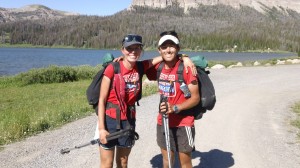 Who doesn’t love a good gear review? Here are my thoughts on most of our big categories of gear after the gauntlet known as the CDT. I haven’t included every little item but rather the stuff people might be interested in getting for themselves, or the stuff that I think is just genius (usually someone else’s idea, like Skurka’s trash compactor bag as a pack liner).
Who doesn’t love a good gear review? Here are my thoughts on most of our big categories of gear after the gauntlet known as the CDT. I haven’t included every little item but rather the stuff people might be interested in getting for themselves, or the stuff that I think is just genius (usually someone else’s idea, like Skurka’s trash compactor bag as a pack liner).
Overall, we’ve collected a lot of gear over the years, much of it on sale, so it’s off-brands or limited quantity stuff. I tried to keep it high level so these are products a person can actually still purchase or find in regular stores or online gear shops. Also, I know some of our gear could be lighter, but there’s always the price factor, so it’s a balancing act of cutting weight, oftentimes shaving ounces, and not draining our savings.
Here’s a link to a spreadsheet with our gear and weights.
Summary:
Shelter and Sleeping:
Tent: Started with a Henry Shires 2 person tarp tent (41 ounces with stakes, pole and stuff sack) and switched to a 1 person Six Moons Design Solo Trekker Tarp Tent (24 ounces with stakes and stuff sack), both of which have updated models since.
Sleeping bag: 30 degree quilt from Enlightened Equipment (20 ounces with stuff sack)
Sleeping pad: 3 feet of a 6 foot Ridgerest; the same one used on the Colorado Trail (7 ounces)
Packing:
Pack: Gossamer Gear G4 (16.5 ounces)
Pack Liner: 2mm 20Gallon Trash Compactor Bag (2.2 ounces)
Stuff Sacks: One 20L waterproof stuff sack each – Sea to Summit brand (2 ounces).
Cooking and Water:
Peanut Butter Jar: 1.3 ounces
Bleach: 2 ounces
Clothing:
Main Clothing: Running technical tees and running shorts (around 3 ounces each, average), thin running socks (1-2 ounces), thin fleece running gloves (2 ounces)
Shoes: Brooks Cascadia (10-11 ounces each)
Poles: Cascade Designs (15 ounces) and Black Diamond (21 ounces) and eventually Big Agnes Helinox Ridgeline (16 ounces)
Windjacket: Montane Featherlite (4 ounces) and Stoic Thrive (4 ounces)
Wind pants: Patagonia Houdini (3.1 ounces)
Puffy: REI brand model? (14.3 ounces) and Cordillera ? (12.5 ounces)
Rain Jackets: Marmot Precip (12.4 ounces) and North Face Bella (10.6 ounces)
Glove shells: Mountain Laurel Designs eVent Rain Mitts (1.2 ounces)
Small (but still important) Stuff:
Lighting: 24 Lumen Black Diamond Gizmo (2.2 ounces)
Mp3 players: Sandisk Clip Zip (.8 ounces)
GPS: Garmin eTrex 20 (4 ounces)
Ipad mini (12 ounces with cover)
Solar Charger: Bushnell Wrap (3 ounces)
Camera: Sony Bloggie (4 ounces)
Detailed:
Shelter and Sleeping:
Tent: Started with a Henry Shires 2 person tarp tent (41 ounces with stakes, pole and stuff sack) and switched to a 1 person Six Moon Designs Solo Trekker Tarp Tent (24 ounces with stakes and stuff sack)
We liked the roominess of the Henry Shires tent but the sand and dirt in New Mexico tore the tiny zippers apart and we couldn’t shut any of the doors anymore. Granted, this tent was given to us for free on the AT, so we were happy with any miles we could get out of it.
In Steamboat Springs, CO I express ordered the Six Moon Designs tent and took a chance on both of us fitting in a one person tent. We are both around 5’7”, 120-130 on the trail, and though it was tight inside, (only one person could really move around at a time), it was cozy. There was enough room at our heads and feet to keep all our gear in the tent. I recommend this tent for the weight, the price and the space inside. Near the end of the trail the seams did let in water during a deluge of storms in CO, so I need to look deeper into that issue, as it seemed like a strange, sudden fault in the tent that otherwise held up in the rain. I’d love to test out a lot of other tents and tarp systems out there, as there are tons of options.
Sleeping bag: 30 degree quilt from Enlightened Equipment (20 ounces with stuff sack)
After doing research and getting others opinions, we went for these quilts and if I were to do it again, I’d get a warmer one and I’m not sure I’d get it from this company again (though this company’s products have evolved quite a bit the last few years). The feathers never actually stayed in their compartments, so I was often very cold, with the majority of warmth at my feet and on my sides, due to gravity. Many nights in CO and MT, I wore all of my clothes and was still cold. Before this I used an REI sub-kilo (31 ounces), 15 degree bag, and I’d probably go back to that type of bag, or at least a bag/quilt that is better at distributing the down. Both of us liked the quilt concept, but needed a warmer one with a better ability to distribute the warmth.
Sleeping mat: 3 feet of a 6 foot Ridgerest; the same one used on the Colorado Trail (7 ounces)
Both of us can fall asleep anywhere on pretty much any type of ground, so we don’t need much padding or much length to our sleeping mat. We got a discount on this one before the CT so we kept if for the CDT and they are pretty much trashed at this point. I really haven’t done a lot of sleeping mat testing so I don’t have a wide scope here. We used our empty packs as a layer for warmth between us and the ground for the length that the sleeping pads didn’t cover.
Packing:
Pack: Gossamer Gear G4 (16.5 ounces)
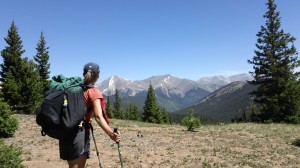
A view of the G4 from behind, always looking bigger and heavier than actuality because of the large outside pockets.
Huge drop in weight from our previous packs, Granite Gear Vapor Trails, which were 37 ounces and could only carry about 30 pounds, the same weight capacity as these 16.5 ounces Gossamer Gear G4 packs. We first heard about GG at the White River 50 miler, from a runner who loved their super light poles, so that’s what got us looking at their gear. The pack was on sale for $100 and cut 21 ounces off our pack weight for the same load capacity. We really beat up these packs, tearing holes in the side mesh pockets and Matt eventually ripping some material, but we were happy with their fit and functionality. We should have bought an extra camera pocket to attach to a strap, and getting our own water bottles out of our packs was difficult due to the side pocket construction, but overall great packs that we were happy with them. There are quite a few options out there for lightweight packs around a pound that carry 25-30 pounds (thinking Six Moon Designs, Mountain Laurel Designs, Z packs) so I’d certainly do some shopping around if we were going on another hike.
Pack Liner: 2mm 20Gallon Trash Compactor Bag (2.2 ounces)
All Skurka here and our favorite way to keep all our stuff dry without putting everything into its own waterproof stuff sack.
Stuff Sacks: One 20L waterproof stuff sack each (2 ounces). All other bags were Ziplocs
Maybe it was overkill to carry one each but we wanted to be double sure that electronics and maps stayed dry in the heaviest of rains. I love organizing things so it kills me to not compartmentalize every little thing, but in reading Skurka’s guide book, he touts the weight-saving tactics of cutting out stuff sacks and he’s absolutely right.
Cooking and Water:
Peanut Butter Jar: 1.3 ounces
A tip we got from Zippers and Stretch on the AT; no cooking, just soaking things in a peanut butter jar that cook on their own, like instant soups, refried beans, and ramen. About a half hour before eating we’d fill up the jar with our food, put it on the outside of our pack to “cook” in the mesh pockets, and boom, we had solid food. We thought we’d really miss warm food but like anything else, we adjusted and now love this system of cooking.
Bleach and Aqua Mira Emergency Straw: 2 ounces and less than 1 ounce
We’ve used bleach for nearly all of our thru-hikes and haven’t had a problem yet, so we kept this method going. The emergency straws were a gift from my sister and we actually used them a lot for days when we went way too long without water and wanted to chug a liter at a water source while carrying out another soaking in bleach. We also used the straws on days that we had a lot of water sources and we wanted to move fast, so we didn’t carry any water and just drank with the straw every 4-5 miles. Going forward we’d likely carry the Sawyer Squeeze because they are just as light and don’t use chemicals.
Clothing:
Main Clothing: Running technical tees and running shorts (around 3 ounces each, average), thin running socks (1-2 ounces), thin fleece running gloves (2 ounces)
We’re runners and therefore have a huge running wardrobe to choose from. Running shorts, shirts and socks work for us because they dry quickly, are light, and we know we don’t get chaffage in them. The downside is the stink factor that often accumulates, especially in the technical running t-shirts. Wool shirts like Smartwool products are likely in our future.
Shoes: Brooks Cascadia (10-11 ounces each)
Found these shoes at a great price before the trail so we bought 3 pairs each and had them in resupply boxes. 4 pairs for the entire trail would have been better. I loved these shoes but the newer models are a little less rugged and I honestly haven’t tried many trail shoes, so I’m sure there are lots of options out there. We’re fans of trail running shoes for most hiking where there’s a defined path and while a lot of the CDT wasn’t defined, it also wasn’t so rugged that we needed heavier duty shoes.
Poles: Cascade Designs (15 ounces) and Black Diamond (21 ounces), later Big Agnes Helinox (16 ounces)
The Cascade Design poles were bought at a really cheap price and they held up the whole way. The BD ones were from the PCT, the AT, and the CT, and it wasn’t until 300 miles into the CDT that they broke. Duct tape held them up until I bought the Big Agnes ones in Steamboat. I like the BA ones because they feel tough and durable, and since Matt needs a new pair, I think we’ll try out Gossamer Gear poles next because they are light, tough and ultrarunner friendly.
Windjacket: Montane Featherlite (4 ounces) and Stoic Thrive (4 ounces)
Both wind jackets that we bought on Backcountry.com for super cheap, so kind of took a risk on these but really liked them. If we were to get another wind jacket, I’d go for the Patagonia Houdini because I loved, loved, loved the pants.
Wind pants: Patagonia Houdini (3.1 ounces)
Favorite piece of clothing on the trail. Splurged when we bought these but totally worth it. They are super light and feathery but tough and durable, and the perfect layer in chilly mornings, cool evenings, buggy weather, or sitting around camp.
Puffy: REI brand model? (14.3 ounces) and Cordillera ? (12.5 ounces)
Matt’s puffy is from 2006 and mine’s from 2011; while his is still warm, it is a bit heavy, and mine is in need of replacement if I ever do a long trail again. I bought mine at an REI sale, so it was a price-driven purchase, but I’m certainly envious whenever I see a superior puffy on the trail because I know mine could be warmer and lighter.
Rain Jackets: Marmot precip (12.4 ounces) and North Face Bella (10.6 ounces)
Matt was very happy with this Marmot jacket and I was always jealous of it. While my NF jacket was light, it never felt tough and durable. I also wear my jacket waaaay more than Matt, so I wear out the shoulders because of my pack sitting on it more often. My jacket broke down and let in water much faster than Matt’s and I’m definitely in need of a new one.
Glove shells: Mountain Laurel Designs eVent Rain Mitts(1.2 ounces)
Our hands are often cold in the rain because fleece gloves don’t do much, so these were our attempt at remedying cold hands. Overall, not super stoked about these mitts. We had to seam seal them ourselves, which I didn’t do well, and our hands just didn’t stay that warm or dry. It could have been user error but I often found myself dreading rain because I didn’t feel confident in the mitts. I’d like to give Zpacks rain mitts a try next.
Small (but still important) Stuff:
Lighting: 24 Lumen Black Diamond Gizmo (2.2 ounces)
We went for tiny, cheap, light headlamps and while these were fine for camp time, they were poor for night hiking. We fully knew when we bought them that they wouldn’t function well at night, but we also didn’t think we’d night-hike much. Wrong! We’ve since bought Petzel Tikka and Nao models to use for nighttime running in ultras.
Mp3 players: Sandisk Clip Zip (.8 ounces)
I really wanted to like this mp3 player but it was nothing but a headache from the start. I had trouble loading music, it couldn’t actually read a memory card if it had more than a few gigs of songs, the battery promised 15 hours but barely lasted half that, and it never seemed to fully charge. I should have just splurged and bought a tiny ipod rather than go cheap on this one. This has since been great for daily runs when I have access to charge it each day; it’s just not great for the long haul trips like a thru-hike.
GPS: Garmin eTrex 20 (4 ounces)
This is a big purchase for us because we’ve never used a GPS, so we didn’t really know what to get. After reading about what others used, we found this one used from a friend who had barely used it, so we got it at a great price. I took quite a bit of time and frustration to load the maps and the waypoints, but I eventually figured it all out and this gps got us through the whole trail. Battery life was fantastic and we used it every day, often turning it on every 20 minutes to check our location, going through batteries about 7-10 days at the fastest.
Ipad mini (12 ounces)
We carried a 4 pound laptop on the AT, but we loved the ability to update our blog so the ipad mini was our attempt to carry lighter technology and still be connected to the world. It was our backup storage for maps and I digitized our Yogi town guide and loaded the pdfs onto it. We bought one with the Verizon network installed and our smartphone was T-Mobile, so we figured we’d cover our bases with networks. Overall, the ipad saved our asses a few times when we had a signal to skype. Our phone had a signal 4 times on the trail and in just a few towns, so we mailed it home in MT and solely used skype after that. While we liked the ipad for the ability to update our blog, we couldn’t upload photos because it wasn’t compatible with our Sony camera. It also needed a data signal, not just a cell phone tower signal, to work well, so it didn’t get a signal as often as we would have liked. If we were to do it again, we’d carry a different tablet or a better smartphone, but not both.
Solar Charger: Bushnell Wrap (3 ounces)
This was another product I wanted to like and sort of did, but we ended up sending it home because it couldn’t charge the ipad mini very well and had a difficult time charging in cloud cover. In NM, this thing was awesome because of all the strong, direct sunlight, but after that we never had that kind of sun again and it just couldn’t keep up with charging our phone, the mp3s, the camera, or the ipad. We stopped in town enough to charge stuff so we mailed this home in northern CO.
Camera: Sony Bloggie (4 ounces)
A purchase way back from the AT in 2011, so this camera has taken a beating. Biggest upside is the video quality, biggest downside is the lack of a flash. We’ve since retired this camera and probably should have before the CDT so we’d have way better photos. I probably wouldn’t buy this camera again, though I liked it and it did its job, because there are simply better options out there.
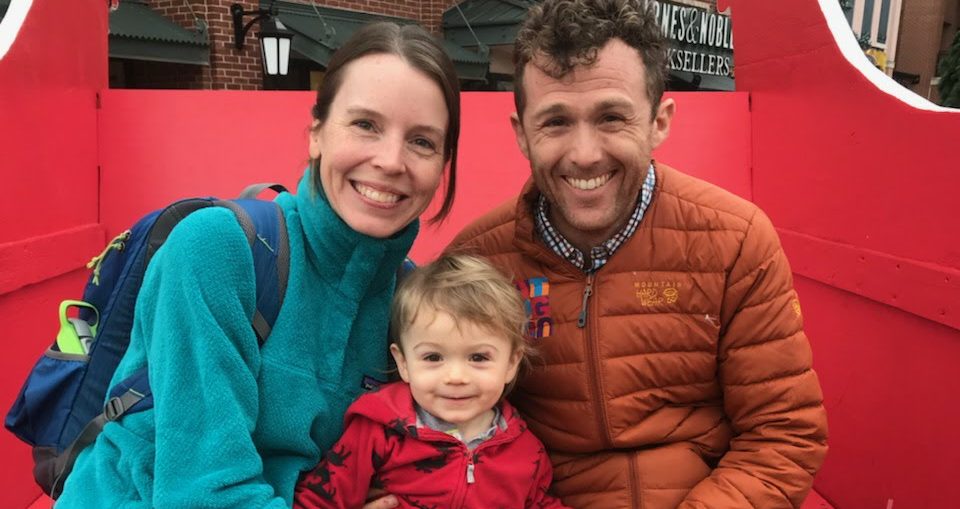














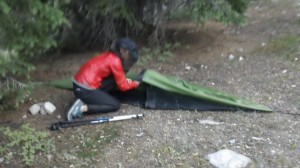

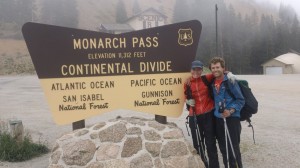
Pingback: Colorado is Calling - Urbyville
Thanks for the info! Just reading your book and enjoying it so far,
Thanks for reading Robin! Glad to hear you’re enjoying the book so far.
The info was extremely helpful. Just read your book and was deeply inspired as we are planning a sectional hike in CO. this summer. We had completed CT a couple of years ago and are ready for the challenge. We know CO is hard, very hard, but it’s our home state and we love it so much-can’t leave it to do others!:)
Thanks Cheryl, for both reading our book and this gear review! Very cool you’ll be hiking in CO this summer. It’s one of our favorite places to be in the summer, except for those scary thunderstorms, of course. The CT is still one of our favorite hikes because it’s such a beautiful trail, yet the perfect length of time to be outside and still love thru-hiking. Best of luck in your hiking this summer.